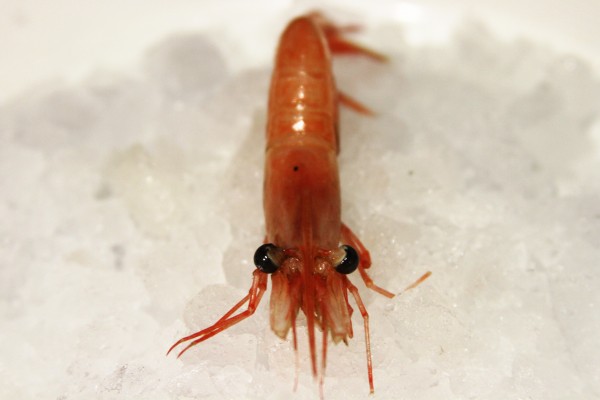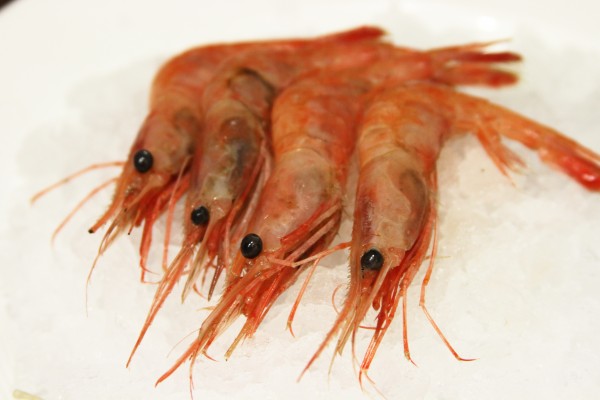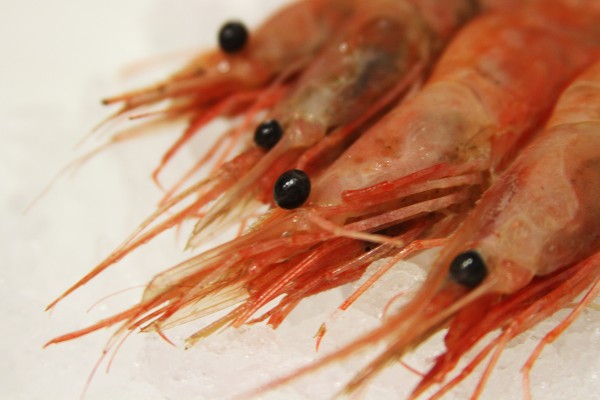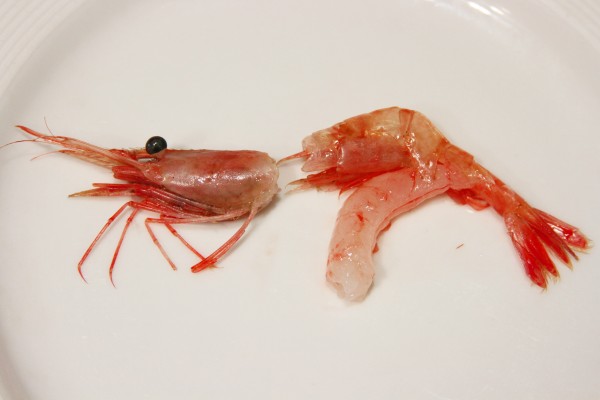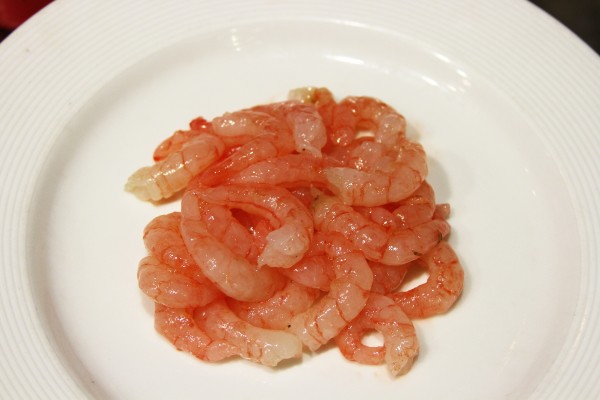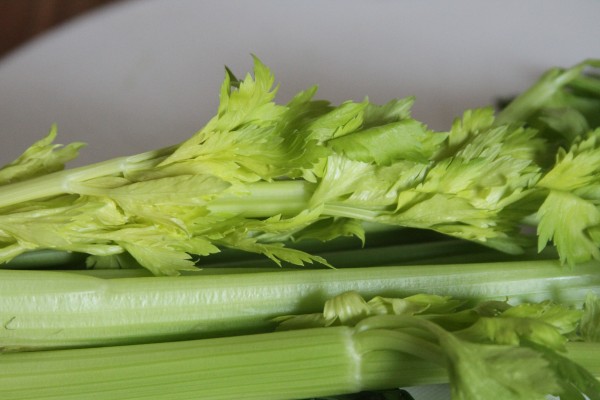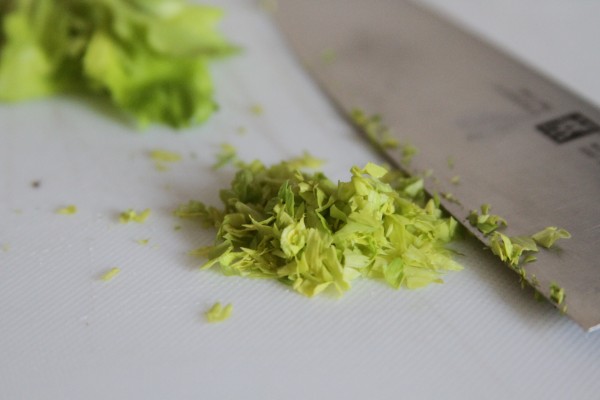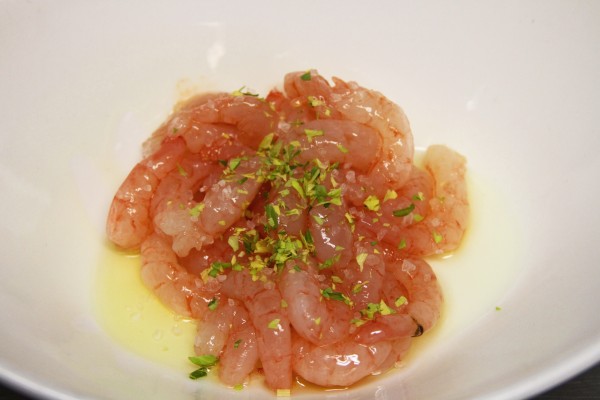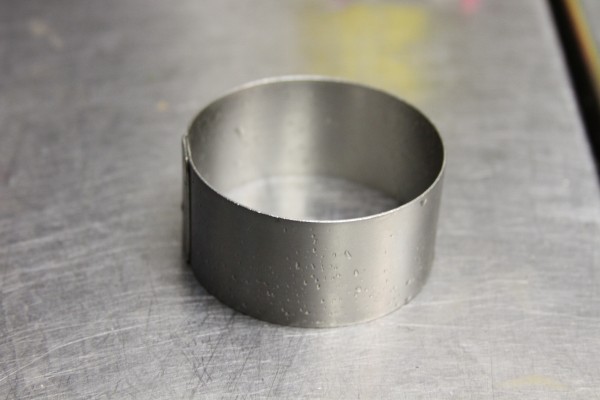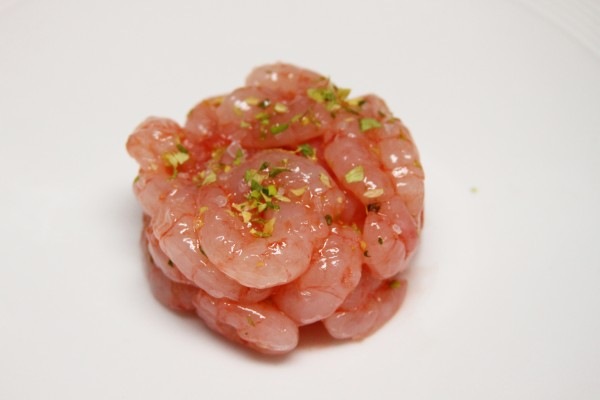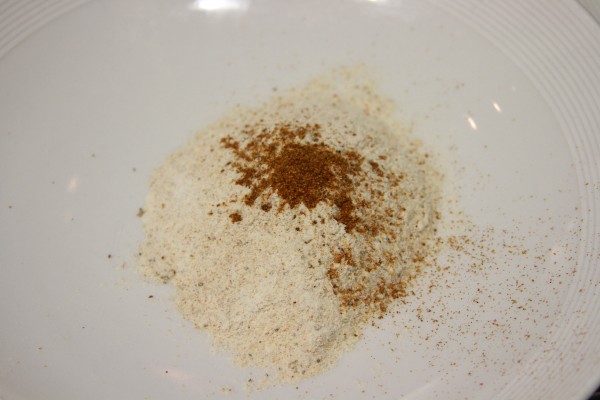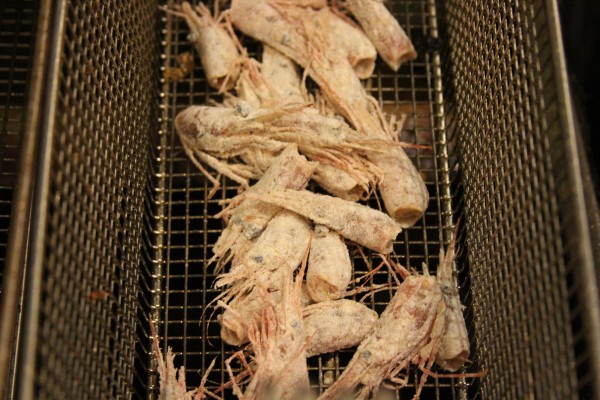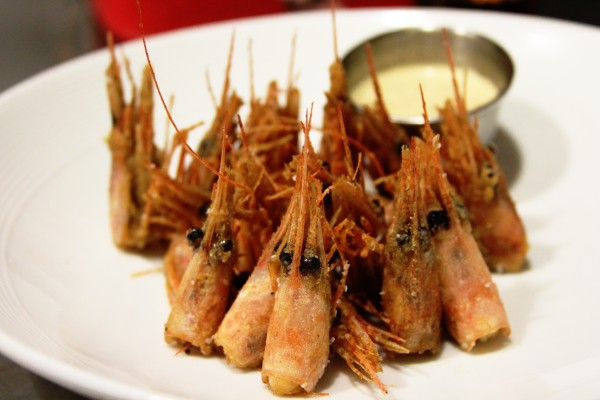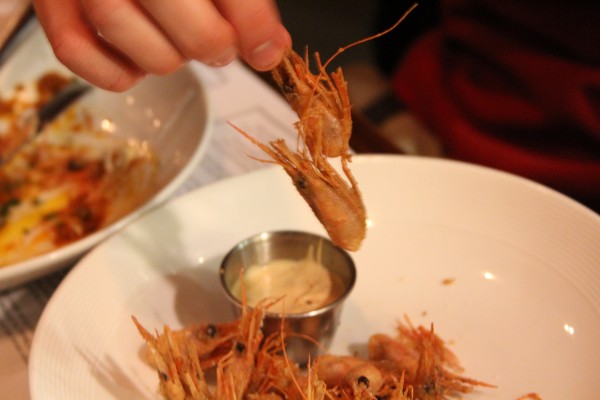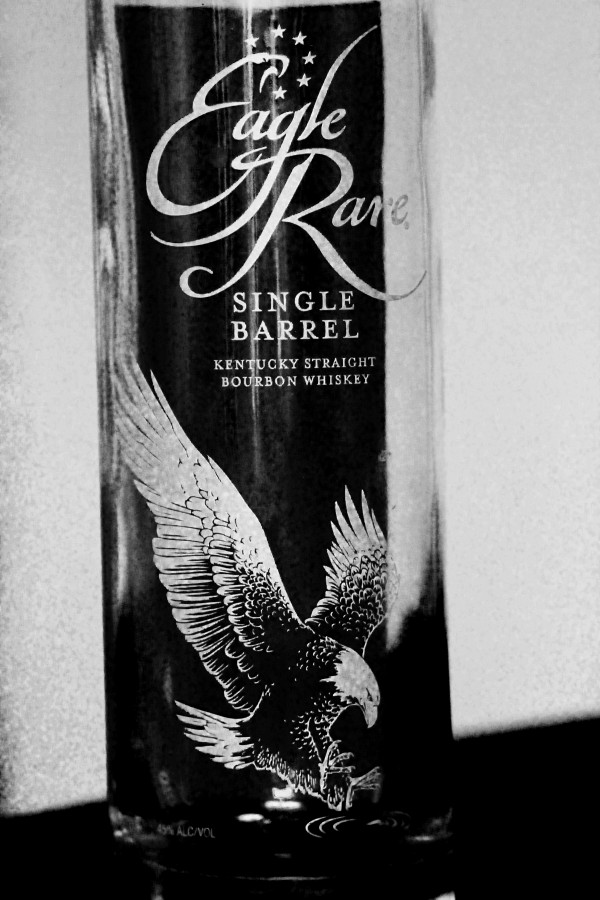In those deep wells of time that exist between the seasons, anglers dream and pine and design with every breath as they await the return of things. Tarpon in the spring. Giant redfish in the winter. Snook in the summer. Whatever the quarry, the desire is the same. An all-consuming feeling that seems as though it will kill you if it’s not exercised soon. And the catharsis exists only in coming face to face with that fish you’ve spent so long dreaming about and planning for. And you do it a few times, many times, once a season. You relish the moments and you begin the long wait until next year.
However, this behavior is not limited to fisherman and hunters. For those that cook, the waiting and fantasizing about ingredients that come but once a year is no different. Now, I’d be lying if I told you that cooks and eaters experience the yearning for seasonal ingredients with the same intensity that anglers await fish. They don’t. But they certainly try. Talk to a someone who cooks about ramps, squash blossoms, wild salmon, or softshell crabs and you’ll see, far away in their eyes, that same glimmer of madness that you’ve seen break in waves in the eyes of an angler. And so, year after year, and with bated breath I await the return of a most beautiful and decadent crustacean.
Enter Pandalus borealis.
Each year when the chill of winter swallows New England and lends the north Atlantic its icy chill, great, roseate hordes of P. borealis ascend from the crushing blackness of the north Atlantic abyssal plains to invade the rimy shallows in the Gulf of Maine. I call them Maine shrimp, but they’ve been known to travel under the handles of northern prawn, northern shrimp, sweet shrimp, and pink shrimp. Though most people simply refer to them as delicious.
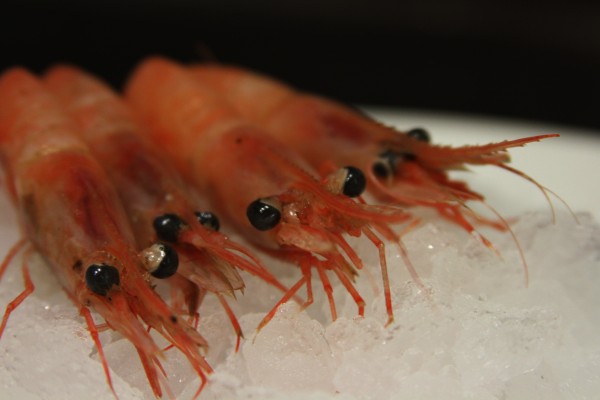
Despite the moniker, Maine shrimp are found in the north Atlantic, north Pacific, and Arctic oceans. With such an immense range it should come as no surprise that the Maine shrimp support extensive commercial fisheries throughout their distribution, with the Danes, English, Germans, Russians, Koreans, Canadians, and Japanese all cashing in on the action. Domestically, Maine accounts for nearly 90% of the total yearly harvest with New Hampshire and Massachusetts bringing up the rear. Internationally, Canada and Greenland support the largest fisheries.
Maine shrimp are fished with trawls over soft bottom, which is super resilient to and recovers very quickly from this method fishing. The mesh of the nets used in the capture of Maine shrimp is large enough to allow immature shrimp to escape and the nets are all equipped with escape hatches for any finfish or cetaceans that might find themselves accidentally ensnared. Furthermore, these shrimp are fairly short-lived, reach spawning maturity pretty quickly, and produce offspring in large numbers. All of the aforementioned adds up to a species with biology and habits that allow for a more or less fully sustainable harvest.
Before we get into a couple of my favorite methods of preparation for these sweet little treats here are a couple of interesting bits of trivia about P. borealis:
Just like snook, they are protandrous hermaphrodites, beginning life as male and changing to female after about 3 1/2 years.
Maine shrimp are also an excellent source of alkaline phosphatase, an enzyme that is in molecular biology to remove phosphate groups from other molecules.
The carapace of the maine shrimp is a major ingredient used in the production of chitosan, a carbohydrate molecule that has a number of commercial and scientific applications. Chitosan is used to treat plant seeds and amplify their growth rates, as an environmentally friendly pesticide, as a filtering agent used in treating water, wine, and beer, and it is an excellent blood clotting agent as well. Currently, chitosan laced bandages are being used by the UK and United States armed forces in combat zones in Afghanistan.
Now that you know what these shrimp bring to the laboratory table let’s take a look at what they bring to the dining room table.
As with any fish that comes from cold water, the flesh of the Maine shrimp is fatty and it has a creamy quality. The flavor is rich and buttery with light briny notes, and simply put, intense. However, it is not like that sharp, ammoniated rank of a bait a shop that hasn’t cleaned their shrimp tanks in three weeks. The fullness of the flavor is more shimpy, but possessed of a fresh saline quality. I would put it somewhere within the realm of fresh sea urchin. Not the same, just similar. I guess. With that said, in my opinion the best tactics to use on such a full flavored item are the simplest ones. Like really simple. Like we’re not even going to cook these bitches. Well maybe we’ll cook them a teeny bit. We’re going to do two plates, with both of them falling within the appetizer family of dishes. A crudo and fried shrimp heads.
Before we continue I do want to point out that these dishes, in my opinion, are only successful if you’re using fresh product. The frozen version of Maine shrimp are not well suited to raw and barely cooked preparations. Gamy is a word. One that would be diplomatic in describing the flavor of these shrimp after they’re frozen. For those of you in southern states, fresh Maine shrimp might be difficult to come by. Find the most reputable fishmonger in your area and see if they can source fresh product for you. If they can’t, then the other option would be to contact a fishmonger in the northeast or northwest near areas where Maine shrimp are harvested and inquire as to whether they offer overnight shipping on fresh product. Most major retail fishmongers will do this. As luck would have it Maine shrimp are fairly inexpensive (usually between $12-$15 a pound) given how tasty they are, so between the cost of shipping and the cost of the shrimp it shouldn’t be terribly expensive if you do have them shipped.
Breaking Maine shrimp down is pretty straight forward and pretty easy. First, remove the head. Do this by gently twisting if off from the tail. Set the head aside. For the tail, gently peel off the shell by starting one side and peeling up and over the back the tail. Don’t use a shrimp cleaning tool or scissors or a hammer. The flesh is super delicate and you run the risk of ruining it if you start cramming stuff under the shell. Take your time and do it by hand. Set the tails aside. As for the shells, you can toss them or freeze them and use them down the road for a shrimp stock. Or use them for DIY field dressings. If, you know, that’s the sort of thing that you might need.
At this point you should be left with this:
And this:
Throw the heads into the fridge for the time being. You’ll want to start with the crudo. Generally speaking you always want to work from cold to hot dishes when you’re serving courses.
For the crudo you’re only going to need four ingredients. The shrimp, celery, sea salt, and olive oil.
Start with the celery.
What you want for this dish are the leaves from the celery heart. Break the outer stalks apart from head of celery, reserve for bloody mary’s, and look for those beautiful chartreuse leaves on the middle stalks. They’re sweet, crunchy and don’t have the slight, bitter quality that the dark green outer leaves tend to have.
Pick the leaves from the stems and give them a rough chop.
And that’s it. You’ve finished all of your prep. Sweet.
Now, add the shrimp and celery to a mixing bowl. This also the point where you add the salt. You want to use sea salt and you want to use coarse crystals.
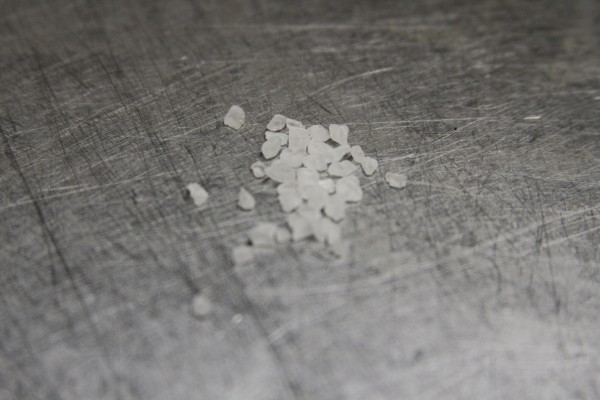
The reason behind using the coarse crystals is two-fold. First, the dish needs salt. Second, they add a nice textural element to the dish. The flesh of the Maine shrimp is very creamy and silky and they’re not as al dente as their southern cousins in the Gulf. The “softness” of the flesh can be a bit overwhelming for some, so it’s up to you add a little bit of texture. The coarse salt will add crunch and even out the mouthfeel of the dish, thus creating a more crowd pleasing dish. You shouldn’t need much of the salt either. A couple of pinches should be enough.
The last ingredient that you want to add is the olive oil. A tablespoon should work. However, the manner in which you add the oil to the mixing bowl is quite important. What you DON’T want to do is pour the oil directly on top of the other ingredients. Pouring the oil directly onto the ingredients causes the oil to accumulate on half of the shrimp, you get clumps of the other ingredients in a few places instead of an even distribution of ingredients, and it’s difficult to adjust seasoning because everything is all jacked up and not where it’s supposed to be. It’s a sloppy approach. What you DO want to do is pour the oil across the sides of the mixing bowl around the outer edges of you the ingredients. This will allow you to fold the oil into the rest of the ingredients and uniformly coat the shrimp with oil, salt, and celery. This is really good technique to employ when dressing food. Especially salads.
Fold in the oil and work the shrimp through with everything in the bowl until you can see that all the tails are consistent in their coating with all the ingredients. There shouldn’t be any ingredients left on the in bowl. Everything should be stuck to the shrimp. Now you’re ready to plate. For that we’re going to bring out our old friend the ring mold.
The name of this utensil belies it use. It’s a ring and it’s used to mold stuff. Anything you want. A crab cake, a burger (they come in different sizes), a small cake, chum balls, cat food, whatever. In this case? A delicious shrimp crudo! Spoon the crudo into the ring mold until it comes flush with the upper edge of the mold. Gently tamp the crudo down inside the mold so that it will hold its shape.
(Photo Not Found)
Then all you have to do is carefully remove the ring mold and you’ve got some real sexy shit waiting for you.
Garnish the crudo with a little bit more of celery leaf and you’re done. Serve it on a revenge cold plate and you’re out. Onto the cabezas!
First you want to set up your flour dredge. For this you want to use Wondra flour, or any other instant flour, and just enough to coat however many shrimp heads you’re going to fry. Here I’ve got a couple of tablespoons. Instant flours are killer for any frying job that requires just a simple dredge in flour. Oysters, calamari, shrimp heads, green tomatoes, etc. These flours are very finely ground and then steamed and dried. This leaves a them with a very even and very fine texture. What this translates to is a flour that is going to get very crispy and flaky, but more importantly isn’t going to get lumpy in the presence of moisture. Thus it will stick to whatever you’re frying in a single and even layer. Uniformity! That shit’s key when you’re frying.
You’re also going to want to hit the flour with maybe a teaspoon or so of Old Bay. Don’t over do it. A little old bay goes a long way and all you really want from it is a little salt and a little kick. Give the flour and old bay a stir with a fork, add the shrimp heads and toss them through until they’re fully coated.
Once the shrimp heads have been sufficiently antiqued they’re ready to fry. Fill a high sided pot with enough canola oil for the heads to submerge in. Heat it to 375 farenheit and add the heads. If you’ve got access to a commercial fryer like I do then you get to use a fancy basket as a vehicle for conveying the heads into the hot oil. If you don’t, then ease the heads two or three at a time into the oil until you’ve reached capacity or you’ve got them all in. Let the heads fry for about a minute. That’s it. Pull them out with slotted spoon or whatever, just don’t use your hands, and transfer them to a paper towel so they can drain. After that they’re ready to eat!
I’m fairly certain that some international treaty exists wherein it is stated that any fried food served to oneself or others must be accompanied by a dipping sauce. I’m certainly not one to disobey the rules, so I served these little daddies with a chipotle mayo. As far as the recipe goes for the mayo pictured. Well, I can’t give it you. Because I don’t have it. It belongs to the restaurant. But, we can certainly make our own. Take a hot minute and check out the recipe I posted for the lemongrass caesar dressing. For purposes of the chipotle mayo, the steps will be the same in making the mayo and you want to use all of the same ingredients, except for the mustard which you can just drop from the recipe entirely and the lemongrass which will be switched out the for the chipotle peppers. How you incorporate the chipotle is up to you. Using just the liquid that the peppers are canned in is an option that will give the mayo a very even, and silky texture. Pour in the liquid as you blend the other ingredients. This way you can keep an eye on the emulsion so that it doesn’t get too thin. You won’t need much of the liquid at all. That stuff goes a long way. If you want to use the whole pepper do a rough chop on it and add it to the mix and blend away. You’ll get a lot more texture in the mayo and the heat will be a little more punchy. Transfer the mayo to a ramekin, serve, and eat.
You get the idea. Bait! It’s delicious.
Both of these dishes are major crowd pleasers and they’re so quick to make that you can bust them out in fairly large quantity or lots of small batches with relative ease. These are great if you find yourself doing a tapas party or if you just need some quick bites to pass around during cocktail hour. And there’s my segue…
Thus far I have not brought up the subject of pairing booze with food. Until now. Both of these dishes are fairly rich. The crudo bringing that richness via buttery and silky shrimpiness and the fried heads punch up the briny, shellfish quality of the shrimp. As such you want to be drinking something that is going to play large enough on the palette to compete and that matches well with salty flavors. My advice? Bourbon.
Not just any bourbon though. I went with Eagle Rare. A single barrel bourbon whiskey from Buffalo Trace. Eagle Rare has some excellent malty notes that play nicely with the briny quality of both dishes and just enough herbaceousness and wood to keep it from becoming too cloying. Eagle rare is dry and just stern enough to really cleanse the palette after each sip so that the richness of the food doesn’t bog your tastebuds down and it will seem fresh with every bite, but no so stern that your mouth will taste like hot fire.
There you have it. Shrimp. Bourbon. Fun.
I’m off to Flamingo a dozen days from now to scratch the itch and stick some redfish, snook, and hopefully a poon or two. So, next time around I should have some serious (live) fish porn and hopefully a good story or two to share.
-Baz


